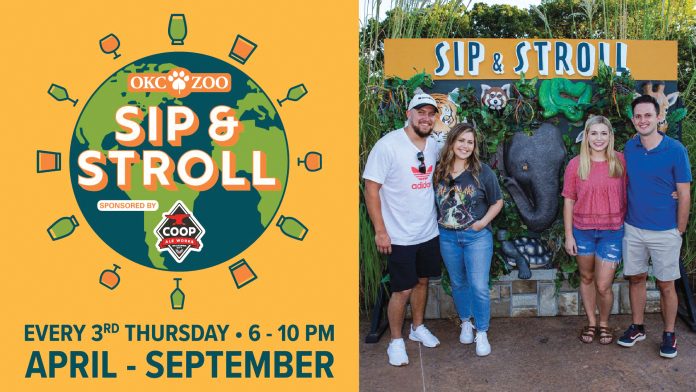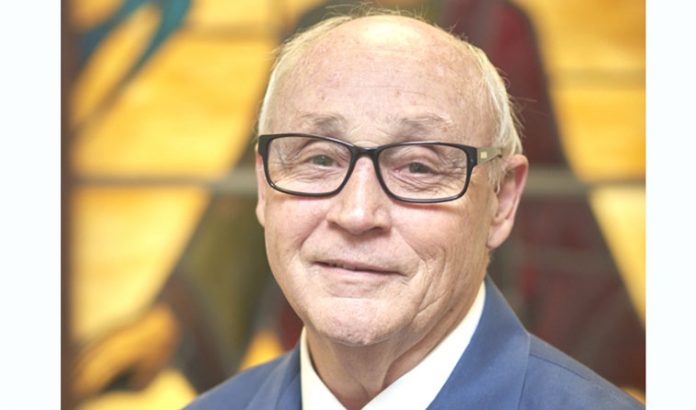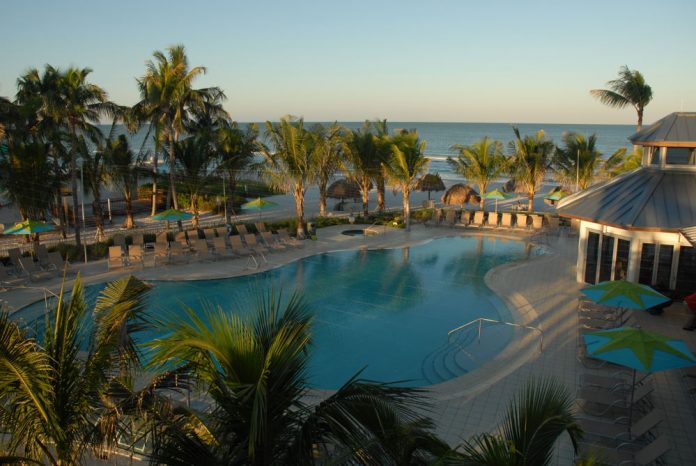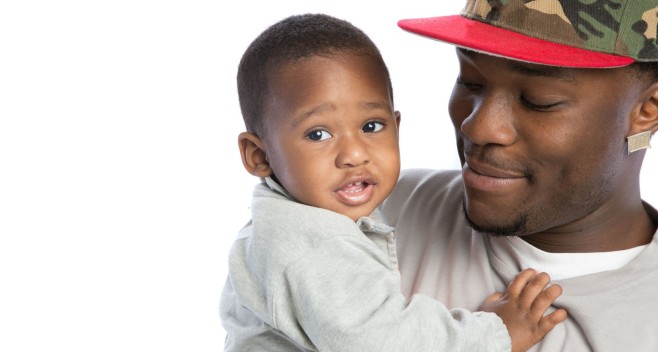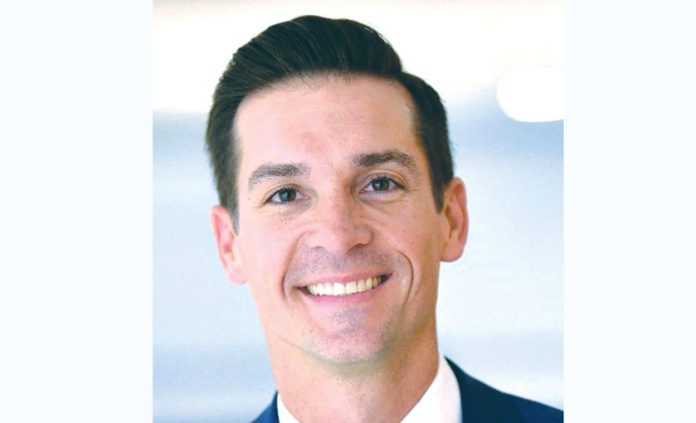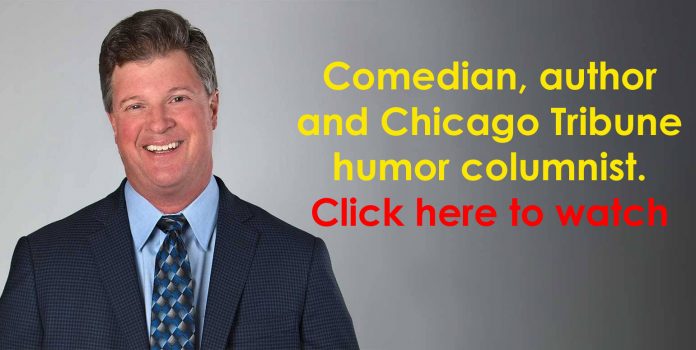Since 1951 the cannon used by William “Buffalo Bill” Cody and Gordon W. “Pawnee Bill” Lillie in their Wild West Show has been on display at the Oklahoma Historical Society (OHS) headquarters in Oklahoma City. It was first displayed outside the original OHS building at 2100 N. Lincoln Blvd., and then at the new Oklahoma History Center at 800 Nazih Zuhdi Drive. After more than 70 years in Oklahoma City, the cannon will return to the Pawnee Bill Ranch and Museum in Pawnee.
According to Ronny Brown, the Pawnee Bill Ranch and Museum director, the Model 1861, 3-inch ordnance rifle was cast in 1863 at the Phoenix Iron Company in Phoenixville, Penn. The gun reportedly saw service in several Civil War battles, including Missionary Ridge, before Pawnee Bill acquired it for use in the Wild West Show. After the Wild West Show, the gun found a home on the front lawn of Pawnee Bill and May Lillie’s mansion. Shortly before Pawnee Bill died in 1942, he gifted the gun to his longtime friend and publicist Frank Stuart. The carriage was in bad shape and continued to deteriorate as the gun sat in Stuart’s backyard in Oklahoma City for many years. Stuart died in 1950, and under his will the cannon was gifted to the OHS in 1951. The OHS had a new carriage built for the cannon, and has displayed it in Oklahoma City ever since. Now the gun is set to return home to the front lawn at the Pawnee mansion.
The OHS is providing $15,000 in matching funds toward the $30,000 needed to restore the carriage, build a suitable exhibit space, and move the cannon to Pawnee. “This has been a dream of the local community for many years, and we are so excited to be working on plans to make it happen,” said Mona Denney, president of the Pawnee Bill Ranch Association. “We are launching a fundraising drive to raise the $15,000 needed to complete the project. This will be a big attraction for the ranch, and we can’t wait to see it back home on the mansion lawn.”
“We are very pleased to be working with the community of Pawnee to bring the cannon back to the ranch,” said Trait Thompson, executive director of the OHS. “The project includes placing a flagpole near the cannon and lighting the front of the mansion and the cannon display. The cannon will be placed on a concrete pad with exhibit panels to tell the cannon’s story. Also included in the project is a new sidewalk to ensure the display is accessible to everyone,” continued Thompson.
“Come by for a visit and make a donation to the project to be a part of this opportunity,” said Denney. “If you can’t make it for a visit, give the ranch a call to make a donation at 918-762-2513.”
For more information about the Pawnee Bill Ranch and Museum or directions to the site, please visit www.okhistory.org/pawneebill or call the ranch at 918-762-2513. The Pawnee Bill Ranch and Museum is located at 1141 Pawnee Bill Road in Pawnee.
Wild West Show Cannon to Return to the Pawnee Bill Ranch
COUNT GREGORE BEING HONORED AS KING IN 2022 OKLAHOMA SENIOR FOLLIES
by Dot Liles, Contributor
John Ferguson turned 94 in February and is still counting. Yes, Oklahoma has counted on him many times. He has lent his talent, not only professionally, but to a host of charitable and fundraising events. This year the Oklahoma Senior Follies are counting on him to be our “King” and “Count.” He will be helping us raise money for the Alzheimer’s Association.
John will be surrounded by a bevy of beauties with elaborate show costumes and hats. Also, joining him on stage will be Jackie Short as “Elvira.” He has just one thing to laughingly say about this to all Oklahoma’s senior men, “Eat your heart out!” You will see him on stage as “John Ferguson,” the King, and as his most-remembered character, “Count Gregore.”
Also featured at this year’s show will be Vince Gill via video performance and Emmy and Grammy-nominated David Hooten on trumpet. There will be many new performers as well as a host of your favorites from past years! The OKLAHOMA SENIOR FOLLIES will be at Hudson Performance Hall, 2820 N. May, Oklahoma City, this year. The show dates are May 20 at 7:30 p.m., and May 21 and May 22 at 3:00 p.m. Tickets can be purchased by visiting the website at www.oklahomaseniorfollies.com or www.TicketStorm.com or by calling Ticket Storm at 866-966-1777. This year we have added a seating chart with $25 seats, $30 seats, and $40 seats. You can also purchase blocks of ten and get a $5.00 discount.
We promise you-it will not be a draining experience! This year will be an overflowing, fun, and exciting show to remember. Count Gregore and the cast of the Senior Follies cannot wait to see you there!
Mulready Says Get Ready Part I: Before the Storm
By Oklahoma Insurance Commissioner Glen Mulready
In Oklahoma, natural disasters are a tragic reality. Every year, disasters disrupt different parts of our state, leaving behind lasting effects on Oklahomans and property. After a disaster, many in our community need help and first responders may not be able to assist right away. That is why it’s important to Get Ready now. You and your family can take simple steps to Get Ready for emergencies and mitigate your risks. Here are some very easy but essential things you can do to Get Ready.
Document Your Property
One of the most important things you can do before a storm hits is to make a home inventory. Keep a detailed record of your valuable belongings to help you recover and file a claim more quickly. Take photos or videos to record your belongings and write down descriptions. Take photos or videos of the inside and outside of your home, including spaces like closets and cabinet interiors. Keep your inventory somewhere away from your home (i.e. safe deposit box, virtual cloud), where it can be accessed after a disaster.
Review Your Insurance
Disasters are a matter of when not if. Understand the risks you may face and talk to your agent to ensure that you have the insurance coverage you need for your property. For example, a standard homeowners policy does not cover floods, and you may need a separate wind and hail policy if you live in tornado-prone areas. It’s also important to prepare your property before the storm hits. Sometimes it is not the storm that directly causes the damage to your home but your possessions that are not secured in your yard. Cut down or trim trees that may be in danger of falling on your home. Secure outdoor objects that could blow away or cause damage.
Make a Plan
Lastly, having a plan in place and knowing how you will respond to the storm can make a significant impact. Be sure to have flashlights, food, water and a weather radio ready at all times. Know how you’ll contact one another and reconnect if separated. Establish a family meeting place that’s familiar and easy to find and practice that plan regularly. Sign up for your community’s alert and warning systems and make sure you understand what these alerts and warnings mean.
To help Oklahomans prepare for this storm season, we’re releasing the three-part column series—Mulready Says Get Ready: Before, During and After the Storm. This comprehensive series will provide you with detailed information on how best to prepare for disasters. In this series, I’ll explain general disaster preparedness tips for before, during and after disasters. Please follow #GetReadyOK and visit www.oid.ok.gov/getready for more information on how to Get Ready.
If you have questions about other insurance issues, please contact the Oklahoma Insurance Department at 1-800-522-0071 or visit our website at www.oid.ok.gov.
OKC ZOO’S ANNUAL SIP AND STROLL EVENTS PROVIDE UNIQUE EXPERIENCES FOR REVELERS 21+
Connect with wildlife and friends during these one-of-a-kind events occurring every third Thursday, April through September. Sip and Stroll tickets on sale now.
Plan your Thursday nights around spectacular sunsets, cool cocktails and wondrous wildlife with the Oklahoma City Zoo and Botanical Garden’s third annual, adult-only evening event series, Sip and Stroll. Presented by COOP Ale Works, Sip and Stroll occurs every third Thursday beginning April 21 and continuing through September 15, from 6-10 p.m. Revelers 21 and older are invited to explore the majority of the Zoo to discover amazing animals and exclusive experiences while savoring delicious drinks inspired by exotic wildlife and wild places throughout the night.
Sip and Stoll features six watering holes with three brand-new locations that highlight the OKC Zoo’s conservation projects both locally and globally. Guests will discover custom cocktails such as The Long Neck and Spotted In Namibia at these wildly themed drink locations that focus on destinations including Madagascar, Tanzania and Namibia. While visiting each watering hole, guests will have an opportunity to learn more about what the Zoo is doing to protect and preserve the natural world through global conservation partnerships with the Wildlife Trafficking Alliance, Cheetah Conservation Fund and others.
“Sip and Stroll continues to grow in popularity and is becoming an event favorite among our adult patrons,” said Jenna Dodson, OKC Zoo’s events manager.
There are more things to see and do while sipping and strolling through the Zoo! Sip and Stroll admission provides attendees with access to a variety of exclusive Zoo attractions including a sea lion presentation, Stingray Bay, the Endangered Species Carousel, an elephant presentation, karaoke, lawn games and more. With each Sip and Stroll event, guests can also get up-close to the Zoo’s gentle giants and partake in the giraffe feeding experience for an additional $5/person. Capacity is limited for these attractions so guests are encouraged to plan accordingly.
The Zoo also has specially scheduled entertainment for select Sip and Stroll evenings with dueling pianos on April 21 and August 18; a drag show for PRIDE Night on June 16; a DJ on May 19 and July 21, and a special live entertainment set on September 15.
2022 Sip and Stroll dates: Thursday, April 21, Thursday, May 19, Thursday, June 16 (PRIDE night with special drag show), Thursday, July 21, Thursday, August 18 and Thursday, September 15.
Event admission to Sip and Stroll is $32/person for non-members or $27/person for ZOOfriends members and online reservations are required. Tickets are available now at www.okczoo.org/sipandstroll. Sip and Stroll Drink Passports will be available for purchase for an additional $27 per person, allowing pass holders to enjoy a 5 oz. sample of all 6 specialty drinks. Drinks will also be available a la carte. Additional beverages and food will be available for purchase during Sip and Stroll from Zoo restaurants and local food trucks. Sip and Stroll tickets are non-refundable and non-transferable. This event will occur rain or shine. To purchase tickets or learn more visit www.okczoo.org/sipandstroll.
Danny Cavett Retires as Director of Pastoral Care at OU Health
For 45 years, Danny Cavett has been a compassionate and supportive presence for hospital patients and their families, helping them navigate difficult circumstances and create meaning from situations that seemed to have none. This month, Cavett officially retires as Director of Pastoral Care for OU Health, where his work as a chaplain has touched an untold number of people.
“I’m going to miss being there every day, but I will stay connected,” Cavett said. “It’s been my life and has helped me feel fulfilled. I love having relationships with families.”
Cavett is retiring from a program that he has significantly strengthened. The pastoral care department now has a staff of eight chaplains and two administrative assistants, along with several other chaplains who fill in as needed. They cover OU Health University of Oklahoma Medical Center, Oklahoma Children’s Hospital OU Health, and OU Health Edmond Medical Center. Cavett also directed OU Health’s nationally certified Clinical Pastoral Education Program, which has four full-time chaplain residents in training.
Their work is often demanding. Last year, there were 6,500 trauma cases at OU Health’s Level 1 Trauma Center; someone from Cavett’s team was present for each one, keeping families updated and comforted. They also respond to all heart attacks and strokes that occur within the hospital, as well as every death. They help families find funeral homes, facilitate autopsies with pathologists, obtain signatures for death certificates, and more. In addition, they aim to visit every new patient within 24 hours of admission.
“We do that to the tune of about 95%. I’m proud of that,” Cavett said. “We know that if a person receives a visit from pastoral care, even if it’s to say, ‘We’re here if you need us,’ then studies show that patient satisfaction goes up quite a bit.”
Although patients may receive visits from their own clergy, the work of a chaplain is a bit different, Cavett said. Chaplains talk about the patient’s medical problems, ask what kind of help they may need, and work with the patient to move toward goals or find meaning in what they’re experiencing. They do so by honoring the patient’s own ideas about spirituality. “Our calling is to work with the patient’s own background instead of me placing my spirituality on them,” Cavett said. “We want to take their story and help them grow with it.”
Cavett and his fellow chaplains have faced additional challenges during the time of COVID-19. When the surge of cases has been at its highest, no family members could come into the hospital; instead, Cavett and his team would go find the patient’s family in their car to deliver news. If a patient was near death, one or two family members could go to the bedside.
“Danny’s dedication to our health system and the patients we serve has been invaluable,” said Jon Hayes, President of Oklahoma Children’s Hospital OU Health. “He has been a kind and comforting presence for our patients as well as our healthcare providers and staff. As we have faced tremendous challenges during the COVID-19 pandemic, Danny’s wisdom and compassion have never been more important. It is hard to imagine OU Health without Danny, but he has made us all better at what we do because of the example he has set.”
Since he began his career, Cavett has experienced substantial change in the medical profession and the evolution of hospital facilities. He began working as a chaplain in 1977 at Oklahoma Children’s Memorial Hospital, which was then located in Bielstein Center near the intersection of 13th Street and Stonewall Avenue. Soon, the hospital expanded with the construction of Garrison Tower, which now connects to the original Bielstein building.
When he started, the hospital had room for about 50 children who were in wards instead of private rooms. Cavett saw each patient or family three times a day, and quickly became known at the hospital. Unfortunately, he also conducted many funerals for children who could not be cured by medical treatments available at the time. As medicine advanced, life expectancy lengthened, and Cavett noticed a related phenomenon among young patients.
“It was wonderful that children began living longer, but we were still treating kids like they were going to die,” he said. “Everything was centered around them, and that gave some kids a victim mentality. I decided that we needed to start a camp to teach kids how to cope with their illnesses — to be a thriver and embrace their story.”
That was the genesis of Cavett Kids, a calling that has run in parallel to Cavett’s career as a chaplain. The first camp he organized was for children with kidney disease; it’s still going strong 44 years later. In 1997, Cavett Kids Foundation became a nonprofit organization, and today it offers seven camps and numerous other programs free of charge for children with chronic and life-threatening illness.
“I remember that first year, we connected all the kids because they didn’t know each other,” he said. “I still do all the teaching at the camps about not being a victim. Our motto is that the illness does not define the child. They get to have fun with other kids who have the same medical condition, and they learn what it means to be a thriver.”
Cavett’s career also has been shaped by communal tragedies. In 1995, when a bomb exploded at the Alfred P. Murrah Building in downtown Oklahoma City, he had just walked into Children’s Hospital. He never went to the bombing site because the need was so great at the hospital.
“We set up a place for the parents who were waiting to hear about their kids (who were in a daycare in the building), and we went into the ER and tried to match kids with their parents,” Cavett said. “By noon that day, it was pretty clear that there would not be many more children who survived. The parents kept coming back to me asking if there was any news. And there wasn’t. That still really haunts me. It’s a memory I have to deal with.”
In the aftermath of the bombing, Cavett helped start a support group for families who lost children. He also helped colleagues in psychiatry conduct research on the prevalence of post-traumatic stress disorder among survivors. Because of his experience with that tragedy, he was called upon to help after planes hit the World Trade Center towers on Sept. 11, 2001. He was assigned to the New York City Fire Department’s medical clinic, where he talked with each firefighter who came in, listened to their experiences, and recommended mental health services if needed. He also traveled to individual fire departments to further visit with firefighters who were working at the site.
Throughout his career, Cavett has given his expertise to two other important entities in the healthcare profession: the Medical Ethics Committee at OU Health and the Institutional Review Board (IRB) of the OU Health Sciences Center. Medical Ethics Committee members are on call to provide consultations anytime a healthcare provider, patient or family member has a concern about a treatment regimen. They thoroughly look at each case and make recommendations to physicians overseeing care. As an IRB member, Cavett is part of the group that reviews and monitors research involving human participants. He plans to continue serving on the oncology IRB in his retirement.
Although he is ready to step back from many of his duties, Cavett said he will stay connected to OU Health through committee work and filling in as a chaplain when needed. His decades of experience will no doubt continue influencing others as well.
“I try to teach people about how to handle the stories we see and hear because compassion fatigue, burnout and moral distress are very real,” he said. “Some stories are very dear, so I keep them in my emotional bag around my shoulders. But if I keep every story in that bag, it becomes too heavy to carry. Some stories I have learned to put on a shelf where I can retrieve them if I need to.
“During my career, I’ve seen a progression of myself becoming less stoic and more willing to show my feelings. I still remember a young girl at one of my early camps who loved to play golf. She got to play golf during the camp, and the next week she died. That’s very dear to my heart. The tears come a lot quicker now. I used to hide them, but now I don’t.”
TRAVEL / ENTERTAINMENT: Paradise Coast: Naples, Florida
Photography and Text by Terry “Travels with Terry” Zinn t4z@aol.com
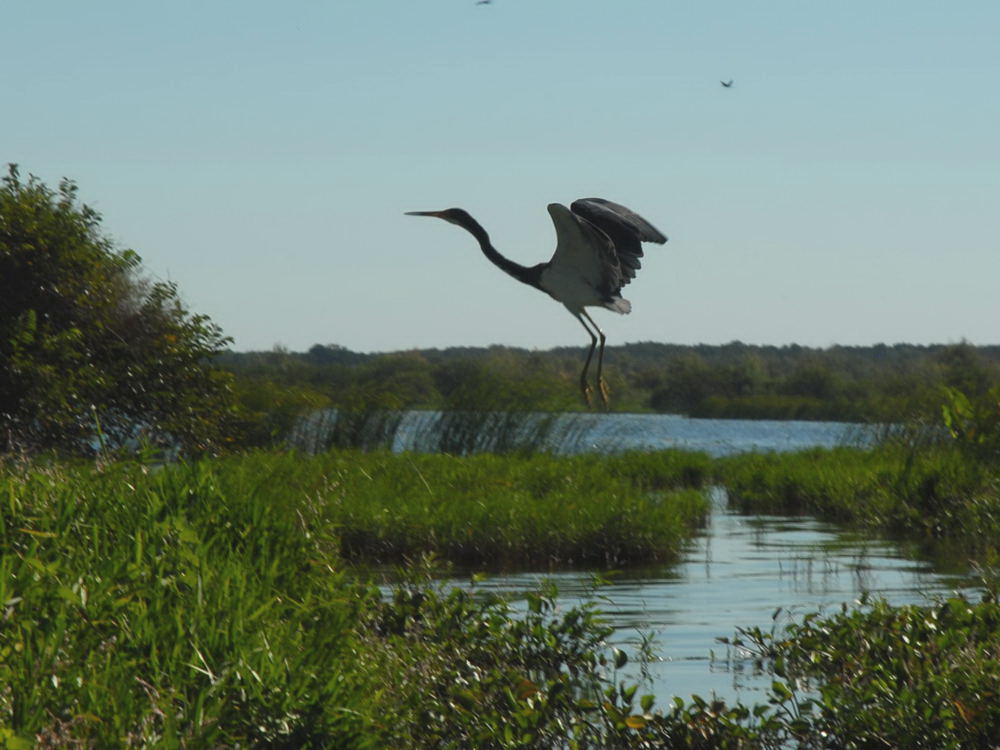
There’s an old joke where a preacher is asking his congregation to raise their hands if they want to go to heaven. Many do raise their hands, but one man does not. The preacher asks the man why he didn’t raise his hand. “Don’t you want to go to heaven?” asked the preacher. And the man replied, “I thought you were asking, who wanted to go right now!”
Many of us are not ready to go to heaven right away, but I’d go to Paradise, No April Fools, that is, Florida’s Paradise Coast anytime. It is the area inclusive of the West Coast Florida Cities of Mediterranean style Naples, and the tropical Marco Island
Naples offers upscale and funky shopping at their Fifth Avenue South: Florida’s own version of Rodeo Drive. Shopping in the historic Third Street South area, one might find the perfect piece of art in one of kind shops. I was surprised at the Tommy Bahama store where a restaurant and bar separated the men’s from the women’s clothing sections. That’s the way to shop! T.B. is famous for their drink of the day, often in martini format, with names like, Frost Bite, Kiwi-Tini, Cayman Cooler and Watermelon Splash. I was tempted to sample one, but dining at the award winning Sea Salt was waiting.
Sea Salt is an upscale restaurant known for fine beverages and a sophisticated culinary experience. After tasting a selection from the extensive menu it’s easy to see why Sea Salt received Wine Spectator Award of Excellence for 2009 and 2010, and named one of the Top 20 Best New Restaurants of 2009 by Esquire.
I could have spent the evening at Sea Salt, but then I would have missed a charming musical production by the Naples Players of “I Do, I Do” at the Sugden Community Theatre in the Fifth Avenue South district. (That show is long gone but check out their upcoming shows.) Another diversion is a pleasurable stroll through the Naples Zoo, with their Black Bear Hammock, Tiger, Lion and Giraffe exhibits, along with their Alligator Bay.
For a real break from reality an airboat ride on Lake Trafford gets you up close and vegetation slapping personal, with the folks at Airboats and Alligators. The extended drive north east to Lake Trafford is worth the effort for the natural vegetation and creature viewing on this west coast head water of the Florida Everglades, known as Corkscrew Swamp.
For your headquarters in paradise, The Naples Beach Hotel and Golf Club offers a family owned yet expansive hotel complex right on the beach; a Naples novelty. Owned and operated by the Watkins family since 1946, the comfy rooms have an historic old Florida feel about them. With plantation shuttered windows overlooking several pools and ocean views, you feel relaxed and right at home. And as the name describes a fine golf course is adjacent. Also unique to Naples, is the hotels HB’s, which is the only beach front dining restaurant in the City of Naples, and has been awarded a Wine Spectator Award of Excellence 2005-2010.
Once ensconced at a resort I usually like to leave the car parked and do nothing on a schedule, and know that my needs are met at the hotel; whether it is finding snacks and forgotten sundries from the gift shop, dining options, or the comfort of viewing a lazy sunset, or a favorite movie on the flat screen.
A Florida Paradise Coast getaway is a little bit of heaven, with shopping, attractions, fine dining, resort accommodations and relaxing seaside, letting any stress evaporate into the gentle ocean breeze. I can see why AARP named Naples-Marco Island the 10th best place in the country to retire and live.
______________________________________________
For more information before you go check out: www.paradisecoast.com
Naples Beach Hotel and Golf Club: http://www.naplesbeachhotel.com/
Sea Salt Restaurant, Naples: http://www.seasaltnaples.com/
Naples Zoo and Caribbean Gardens: www.napleszoo.org
Airboats & Alligators: www.laketrafford.com/tours.html 1-239-657-2214
Hilton Marco Island Beach Resort and Spa: www.hiltonmarcoisland.com or 1-800-445-8667
Mr. Terry Zinn – Travel Editor
Past President: International Food Wine and Travel Writers Association
3110 N.W. 15 Street – Oklahoma City, OK 73107
https://realtraveladventures.com/?s=terry+zinn
https://realtraveladventures.com/?s=zinn
http://new.okveterannews.com/?s=TERRY+ZINN
www.martinitravels.com
Retired Attorney Looking for a Change?
Would you like to Volunteer as a much-needed pro bono attorney with LASO?
Fill out our form.
A pro bono coordinator will be in touch with you.
Why pro bono? Here are some benefits to you!
Do you have a current client that might be income-eligible for LASO services?
Learn how to self-refer your own pro bono case here.
Free CLE for LASO volunteers? Yes! Find those here.
Join our free pro bono support web site and find a library of resources, free training, click to choose your own pro bono case and more!
LASO needs non-lawyer volunteers at times, too. visit: https://www.legalaidok.org/employment/
New INTEGRIS Health Chief Operating Officer Named
After a national search, INTEGRIS Health is excited to share the selection of Brent Hubbard as the health care system’s new chief operating officer.
Hubbard comes to INTEGRIS Health most recently from Mercy Health System, Mercy Hospital Springfield Communities, where he serves as president and COO. Since 2016, his responsibilities were to lead the strategic direction of seven hospitals with administrative and operational oversight of 7,500 coworkers.
Prior to Hubbard’s current position, he served as the chief operating officer at Mercy Health System, Mercy Hospital Fort Smith Communities, and the chief operating officer at HCA, Medical Center of McKinney. Other roles he has held include associate administrator at HCA – Centennial Medical Center and executive director and director of marketing at Woodward Regional Hospital.
Hubbard received his Bachelor of Science in business administration from Oklahoma State University and his Master of Business Administration from Southwestern Oklahoma State University. He is an accomplished health care executive and brings to INTEGRIS Health a strong focus on performance metrics. He is a believer in continuous process improvement. Hubbard has extensive experience in improving physician and coworker engagement, quality measures and patient outcomes, and achieving operational excellence to include service line growth and expanding patient access to health care.
He and his wife, Hilary, were both raised in Oklahoma, Mooreland and Woodward respectively. They are excited to be moving, along with their three children, back to the great state of Oklahoma and joining the INTEGRIS Health team. Hubbard’s first day at INTEGRIS Health will be May 2.
Greg Schwem: I have no more passwords left to give
by Greg Schwem

“Hello! Thank you for downloading our app, which is guaranteed to take up valuable memory on your phone and ensure that, if you ever have a problem with our company, you now have the tools to solve it yourself. Which is why, on our website, you will not find any kind of contact information; only the sentence, ‘Most issues can be solved by downloading our app.’”
“First, we need a user name. Sorry, that name is not available. Nor is that one. Or that one. ‘Bootyliciousgranddad’? As weird as it sounds, even that one has been taken. ‘Greg79450854’ is available. Congratulations.”
“Now, please enter a password. It must contain one capital letter, one number, one special character you never knew existed on your keyboard, and another special character you create simply by pressing, simultaneously, ‘control/option/shift/return/command/function/tab/CAPS LOCK/>/<.’”
“That password is weak. Please try something stronger. May we suggest, ‘Pwb8*)@?!sV’?”
“Now, please re-enter the password. Sorry, the passwords didn’t match. Please check the spelling and be reminded that certain characters do look alike, particularly the ones we suggested for you.”
“Success! If you have not yet thrown your phone against a wall in anger, you are ready to use our app. Almost. First, we need to verify that you are you and not some robot that is capable of completing the user name and password steps. Please retype the following characters: 0oO1liImnmmnmnnOo0.”
“Please click here to request another series of characters that look like they came from an eye chart at your optometrist’s office. You have four more attempts.”
“Whew. You did it on your last try. Way to go! Now you just need to click on every square containing the color white.”
“Try this one. Click on every square where you see a road.”
“Close enough. You have successfully installed our app. Now, please download the latest version, 15.0.7.3.2, which we released while you were trying to find the roads. Please close all other apps on your phone while the installation takes place. The new version will be installed in approximately 13 minutes. Or three hours. Or two days if your internet connection sucks.”
“Your app is now up to date. You may sign in.”
“First, we need your credit card information and a scanned government issued ID. This could be a passport, driver’s license, Social Security card or anything else that could make your life a living hell if hackers stumble across it. But that isn’t going to happen. Rest assured; we NEVER share your personal information with outside sources. And we’re serious. That’s why we capitalized ‘NEVER.’”
“Now it’s time to link your credit card information to your digital wallet. Click here to establish a digital wallet. You might want to walk away from your phone for a few minutes, because establishing a digital wallet means creating another user name, password and avatar. Spend this time away from your phone by going to another device and Googling, ‘What is an avatar?’ Or just beat your head against a wall.”
“Make sure you store your digital wallet login information separately from where you keep your other password information. If you cannot access your digital wallet, you will NEVER be able to retrieve the funds you placed there during a night of drinking with your friends because Steve told you it was time to start investing in cryptocurrency. By the way, Steve did not offer to pick up the check. What does that tell you about crypto?”
“Please check your inbox for a verification email. Simply click the link and you will be able to use our app. If the email does not appear between 30 seconds and 24 hours, please check your spam folder. If you do find the email in your spam folder, please add our address to your ‘contacts’ folder so we can send you periodic updates about changes to the app. If you have questions, our chat bot is here to help.”
“Please be advised that our chat bot only knows how to say, ‘Refer to your app.’”
(Greg Schwem is a corporate stand-up comedian and author of two books: “Text Me If You’re Breathing: Observations, Frustrations and Life Lessons From a Low-Tech Dad” and the recently released “The Road To Success Goes Through the Salad Bar: A Pile of BS From a Corporate Comedian,” available at Amazon.com. Visit Greg on the web at www.gregschwem.com.
You’ve enjoyed reading, and laughing at, Greg Schwem’s monthly humor columns in Senior Living News. But did you know Greg is also a nationally touring stand-up comedian? And he loves to make audiences laugh about the joys, and frustrations, of growing older. Watch the clip and, if you’d like Greg to perform at your senior center or senior event, contact him through his website at www.gregschwem.com)
Spring fling mixer set for Tuesday, April 19
Legends at Rivendell invites professionals
by James Coburn, Staff Writer
Healthcare professionals are invited to celebrate the arrival of spring at Legend Senior Living at Rivendell.
Gather among friends at the event hosted by Sarah MacAllister and Kristen Thomas at Legend Senior Living at Rivendell in Oklahoma City from 4:30-6-30 p.m. Tuesday, April 19, located at 13170 S. May Ave., Oklahoma City.
Legend at Rivendell is a center for assisted living and memory care.
Festive activities for the spring fling professional mixer will include appetizers and prize raffles.
“I feel like we are so caught up sometimes in the day-to-day. So, we just wanted the opportunity for professionals to just kind of relax. You can talk about work; you can talk about raffles. We’re just going to have raffles, nothing too scripted just so they can relax and put their feet up,” MacAllister said.
Legend at Rivendell has done similar events in the past prior to the pandemic. Healthcare is one of the most challenging industries to be part of with experiencing COVID-19, MacAllister continued. Their job of caring for millions of seniors across the US continues every day.
“We still need those connections and people outside our building to do their job. And we’re relying on everyone else, and they are relying on us to do our job,” MacAllister said.
While spring is a time of new beginnings, healthcare professionals continue their noble calling of carrying on their shifts with compassionate care and best practices in protecting lives and quality of life itself. Each day is a time of learning something new and to celebrate the human spirit.
The professional mixer is a time to gather with long-time colleagues and to make new personal connections. It is a time to leave your office space and social media to meet in person. Professionals will be able to enjoy the comfortable and relaxed environment.
“We’ll be offering tours if people want to see our community,” she said.
The campus offers assisted living and began offering memory care a few years ago as the need presented itself.
“I can hold 66 in assisted living and then in the memory care they can hold 75 residents,” she said.
The memory care offers three separate neighborhoods, depending on the level of cognitive function of the residents, depending on what the family likes and what the nurses would prefer. They are safe in a home where they can best thrive and be with other residents of a similar mindset and physical level.
Legend Senior Living at Rivendell love community involvement. They are members of both the Newcastle and Oklahoma Chamber of Commerce.
“We believe in paying it forward and having everyone help out. The residents all have cardiologists and primary care doctors and all those things that are in the professional healthcare world,” she said.
Please RSVP by calling or emailing.
For more information, contact Sarah MacAllister, at 405-703-2300 or sarah.macallister@legendseniorliving.com.
Visit www.legendseniorliving.com.






